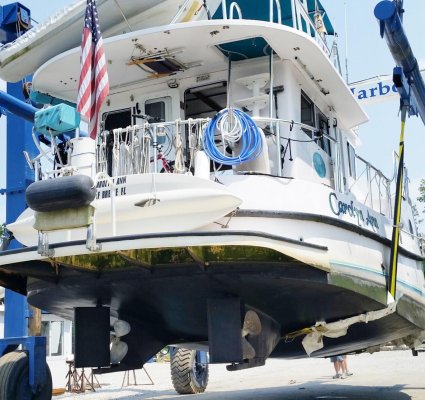Sidclark
Senior Member
- Joined
- Jan 11, 2018
- Messages
- 215
- Location
- us
- Vessel Name
- Jubilee
- Vessel Make
- Marine Trader 36 Sundeck
Ok, going to survey Friday on a sundeck trawler with twins. My question is, with exposed props and shafts, how vulnerable are they to damage? I travel at 6-7 knots. At that speed how much damage would a soft grounding cause in mud or sand. What about a floating or semi-submerged object such a log? Am I to treat them (the props) as if they were eggs or are they more durable then that? Thanks!

